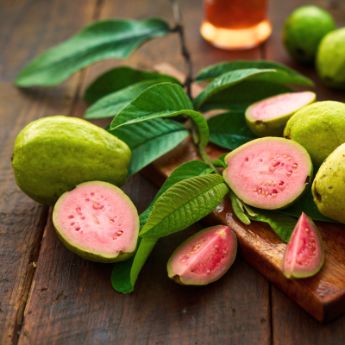Guava Trees
Guava Trees Buyer's Guide
Originating in tropical regions, Guava trees (Psidium guajava) are cherished for their luscious fruits and ornamental value. Native to Central and South America, they have spread globally due to their adaptability. Enjoy their juicy, aromatic fruits fresh, or use them in various culinary delights like juices, jams, and desserts. To grow Guava trees, choose a sunny location with well-draining soil, and ensure regular watering during the growing season. With minimal care, these trees flourish, rewarding gardeners with abundant harvests of delectable guavas year after year.
To ensure your growing success and satisfaction, there are a few things to consider when you buy a Guava tree.
Zone Compatibility
Your climate plays an important role in whether a tree will produce fruit or even survive. Guava trees thrive in tropical and subtropical climates, typically suitable for USDA zones 8 to 11, depending on the variety. Before ordering, make sure your selection’s recommended hardiness zone range includes your area.
Mature Tree Size
Selecting the right Guava tree for your space is essential. Keep in mind that mature Guava trees can reach a height of 20 to 30 feet and have a spreading canopy nearly as wide as their height. Thus, it’s crucial to consider the available space and ensure the tree will have enough room to grow and thrive without becoming cramped or obstructive.
Planting and Site Selection for Guava Trees
When planting Guava trees, thoughtful site selection is paramount to their successful growth and fruit production. Here are some crucial considerations to ensure your Guava thrives:
Sunlight: Guava trees thrive in full sun, so choose a location that receives at least 6 to 8 hours of direct sunlight daily.
Soil: Ensure the soil is well-draining, as Guava trees do not tolerate waterlogged conditions. Loamy or sandy soils with good drainage are ideal.
Frost Protection: If you live in a region with occasional frosts or freezing temperatures, consider planting your Guava tree near a south-facing wall or other protected areas to shield it from cold winds and frost.
Spacing: Give your Guava tree ample space to grow and spread its canopy without crowding. Typically, plant trees at least 15 to 20 feet apart to allow proper airflow and sunlight penetration.
pH Level: Guava trees prefer slightly acidic to neutral soil with a pH range of 5.5 to 7.0. A soil test can help determine if any amendments are needed.
Watering: While Guava trees are relatively drought-tolerant once established, young plants require regular watering to establish strong root systems. Afterward, water sparingly but deeply during dry spells.
By carefully choosing the planting site and providing the right conditions, your Guava tree will flourish, rewarding you with a bountiful harvest of delicious fruits and adding a touch of the tropics to your surroundings.


